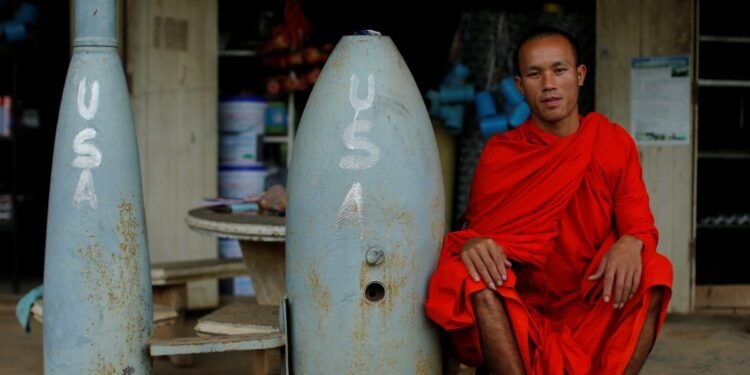In August, the family of United States Air Force Sergeant David S Price finally buried his remains after more than 50 years of waiting.
The 26-year-old was stationed at a top-secret CIA base – Lima Site 85 – on a mountaintop in northeast Laos when it was overrun by Lao and Vietnamese communist forces in March 1968.
Price was among 13 US personnel, along with 42 Thai and ethnic Hmong soldiers, who were killed at the CIA radar station that was used to guide US bomber planes in their attacks on Laos and neighbouring Vietnam during the Vietnam War.
It took decades to find and identify Price’s remains largely because US warplanes were given orders to destroy the CIA site to cover up its work, part of a wider effort to obscure “The Secret War” Washington illegally waged in Laos – an officially neutral country – in the 1960s and 1970s.
This year marks the 60th anniversary of the commencement of a major strand in the US’s secret war, Operation Barrel Roll – a nine-year US bombing campaign that would see Laos becoming the most heavily bombed country per capita in history.
US Secretary of Defense Lloyd Austin is in the Laotian capital Vientiane this week, becoming Washington’s first-ever defence secretary to visit Laos.
Austin is attending the Association of Southeast Asian Nations (ASEAN) Defence Ministers’ Meeting-Plus on Thursday, as part of a regional tour which has already included stops in Australia, the Philippines and Fiji after Laos.
The defence secretary’s visit comes against a backdrop of intensifying geostrategic rivalry in the Asia Pacific region, with Southeast Asian defence chiefs looking for security assurances amid growing maritime disputes with China in the South China Sea and uncertainty in advance of January’s return of President-elect Donald Trump.
Not on Austin’s official agenda, however, is a remembrance of Operation Barrel Roll and the start of the darkest chapter in Laos’s modern history.









 United Arab Emirates Dirham Exchange Rate
United Arab Emirates Dirham Exchange Rate